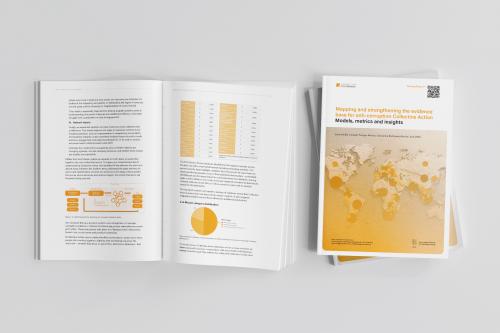New journal article on anti-corruption compliance, non-financial reporting and Collective Action

Oil, Gas & Energy Law (OGEL) has just published a detailed paper I wrote on Anti-Corruption Disclosure in the Oil and Gas Industry: Challenges and Opportunities for Collective Action.
The oil and gas industry is particularly affected by the evolving regulatory landscape and growing jigsaw of standards and guidelines focusing on non-financial (extra-financial) reporting. But many other industries are seeing the same pressures and trends, and I believe they could similarly benefit from Collective Action.
Here is the argument in brief. Please consult the full paper for a much more detailed exploration of the issues, case studies and references.
First, some observations. Environmental, social and governance (ESG) analysis is becoming increasingly important to investors seeking to assess the risks in their investment portfolios. In generic terms, this means investment portfolios are assessed on both traditional financial performance indicators and non-financial indicators, which include the topic of corruption.
Yet there is no exhaustive list of ESG indicators and most indicators cover material topics which are intertwined.
The same applies to corruption, as there is currently a lack of harmony in anti-corruption reporting standards and approaches to anti-corruption compliance evaluation. It's a jigsaw that doesn't quite fit together. In many places the pieces overlap.
This is a feature that we see not only in the oil and gas industry, but in many other sectors with complex global value chains and significant corruption risks.
Second, an opportunity. I argue that the current situation opens a window of opportunity for Collective Action between industry players and other stakeholders to collaboratively develop meaningful and coherent anti-corruption compliance indicators.
Disclosure of the commitments and activities under such Collective Action initiatives in the public domain can lead to a greater understanding from the investor community as well as to greater accountability, and thereby help level the playing field.
Third, a sweetener. Collective Action is supported by both states and international organisations as an innovative approach to tackle corruption, raise standards of business integrity and level the playing field within a specific sector. The World Bank, the OECD, UNODC and UN Global Compact support the methodology. States from Malawi to the UK have endorsed it in their national anti-corruption strategies.
From the private-sector perspective, the 2020 Policy Paper of the B20 Working Group on Integrity & Compliance endorses it as the very first policy action under the first recommendation to the G20 for pursuing "a culture of high integrity in the public and private sectors".
With this in mind, my article argues that engaging in anti-corruption Collective Action is a strong signal of a company's commitment to collaboration in tackling corruption, raising standards of business integrity and levelling the playing field. It should itself be considered as an indicator of anti-corruption compliance within the ESG framework.
Your thoughts?
The article is available online to subscribers here.
I'd be delighted to hear your thoughts on this emerging discussion - feel free to contact me via email, Twitter (@FightBribery) and LinkedIn (Collective Action at the Basel Institute).
Please also take time to check out some of the Basel Institute's Collective Action projects and our other publications, databases and resources on the B20 Collective Action Hub.




